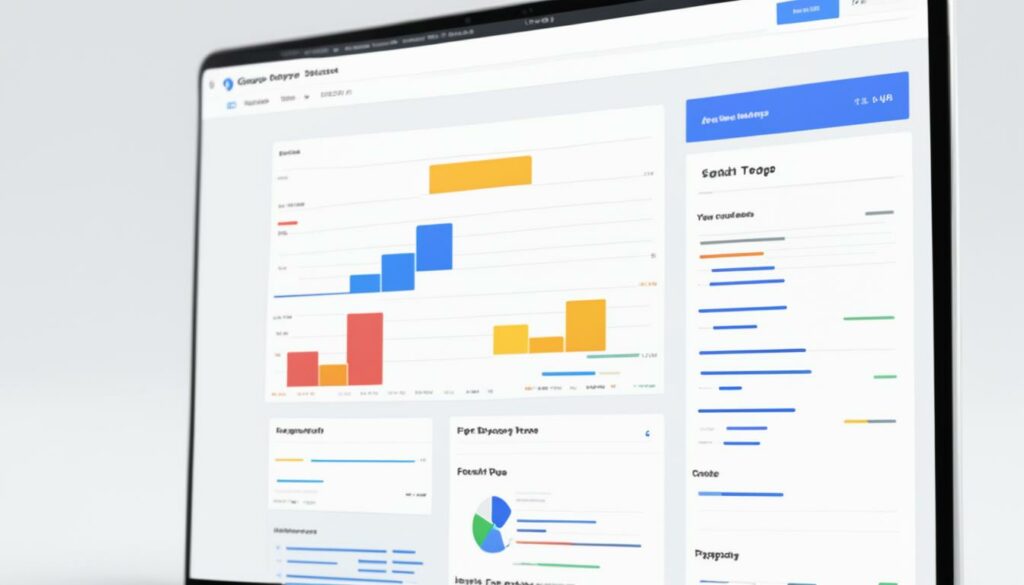Welcome to our article on automated backups in hosting! In this digital age, where data is the lifeblood of businesses, ensuring its security and availability is of paramount importance. Whether you’re a small business owner or a large enterprise, regular backups are crucial for safeguarding against data loss in hosting environments.
Automating the backup process not only saves time and effort but also minimizes the risk of human error. By implementing a reliable backup solution for hosting, you can have peace of mind knowing that your valuable data is protected. In this article, we will provide key insights and best practices for automated backups in hosting, helping you make informed decisions about your backup strategy.
Key Takeaways:
- Regular backups are crucial for safeguarding data in hosting environments.
- Automating the backup process saves time and minimizes the risk of human error.
- Choosing a reliable backup solution is essential for data protection.
- Implementing best practices can help optimize your backup strategy.
- Regular testing and documentation ensure the reliability of backup processes.
Increasing Backup Frequency
Ransomware attacks and the need for rapid recovery times have made increasing backup frequency a top priority in hosting environments. To meet these demands, implementing technologies like block-level incremental backups (BLI) can streamline the backup process and ensure that backups are performed more frequently.
Block-level incremental backups copy only the changed blocks of data, resulting in faster backup times and reducing the amount of storage space required. By backing up only the modified data, you can significantly decrease the backup window while ensuring that all critical information is safeguarded.
In addition to BLI, there are other methods that can help expedite recovery times:
- In-place recovery: This technique allows you to recover data directly to the original location, eliminating the need for data movement. It minimizes downtime and accelerates the recovery process.
- Streaming recovery: With streaming recovery, backups are readily available for immediate restoration. This approach allows you to begin the recovery process as soon as the backup is initiated, reducing recovery time objectives (RTOs).
By utilizing these technologies and methods, you can ensure that automated hosting backups occur more frequently, reducing the risk of data loss and minimizing the impact of potential threats.
| Methods | Benefits |
|---|---|
| Block-level incremental backups | – Faster backup times – Reduced storage space requirements |
| In-place recovery | – Minimal downtime – Accelerated recovery process |
| Streaming recovery | – Immediate availability of backups – Reduced recovery time objectives |
The seamless integration of these technologies will maximize data protection and ensure a robust backup strategy for your hosting environment, providing peace of mind and enabling swift recovery in the face of potential threats.
Aligning Backup Strategy to Service-Level Demands
In today’s data-driven landscape, your organization handles numerous critical applications that require robust data protection. However, prioritizing application recovery times can be challenging without a well-aligned backup strategy. To ensure the availability of your data, it is crucial to implement technologies like block-level incremental backups (BLI) and rapid recovery.

Block-level incremental backups allow you to streamline your backup strategy by copying only the changed block of data, enabling faster backups and minimizing resource utilization. Additionally, rapid recovery methods such as in-place recovery and streaming recovery can expedite the process of restoring data and reducing downtime in case of an incident.
Aligning Backup Frequency with Service-Level Demands
When it comes to data protection, it’s essential to align your backup frequency with the specific demands of your services. Some applications might require near real-time backups, while others can be backed up less frequently without compromising their functionality. By understanding the service-level demands and the criticality of each application, you can optimize your backup strategy to ensure the availability of data when it is needed the most.
Here’s an example of how aligning backup frequency to service-level demands can enhance your backup strategy:
| Application | Backup Frequency |
|---|---|
| Customer Relationship Management (CRM) | Real-time backups – every 15 minutes |
| Enterprise Resource Planning (ERP) | Daily backups – end of the day |
| Webserver | Hourly backups – every 60 minutes |
| Email Server | Weekly backups – every Sunday |
By aligning the backup frequency with the service-level demands, you can ensure that critical applications are protected adequately while optimizing backup resources for less critical systems.
It’s important to note that aligning your backup strategy to service-level demands requires a comprehensive understanding of your organization’s operations and the criticality of different applications or systems. Regularly reassessing these demands and adjusting your backup strategy accordingly will help you maintain the reliability and availability of your data.
Following the 3-2-1 Backup Rule
In order to ensure the safety and redundancy of your data backups, it’s essential to follow the 3-2-1 backup rule. This rule sets guidelines for organizations to maintain multiple copies of their data stored on different types of media, with at least one copy kept offsite.
The 3-2-1 backup rule can be summarized as follows:
| Backup Rule | Explanation |
|---|---|
| Three complete copies of data | Having three copies of your data ensures that you have multiple backup options. It significantly reduces the risk of data loss due to hardware failures or other unforeseen incidents. |
| Two copies stored on different types of media | Diversifying the storage media further mitigates the risk of losing data. By utilizing different types of media, such as internal drives, external hard drives, or cloud storage, you protect your data from media-specific failures. |
| At least one copy stored offsite | By storing a copy of your data offsite, you safeguard against disasters that might affect your primary location. Offsite storage can be achieved through cloud backup services or physically transporting backups to a secondary location. |
Example:
Following the 3-2-1 backup rule allows you to have multiple layers of protection for your data. Imagine if your primary storage fails due to a hardware malfunction. If you only have one backup copy stored on the same media, you would risk losing everything. However, by adopting this rule, even if one backup fails, you still have at least two additional copies available. This greatly minimizes the chances of complete data loss and ensures a more reliable backup strategy.
Remember that cloud storage can be considered a separate media type, making it a viable option to fulfill the 3-2-1 backup rule requirements. Cloud backup solutions provide scalable and secure storage, enabling easy offsite data retention.

By following the 3-2-1 backup rule, you can enhance the overall security and recoverability of your data. It’s crucial to leverage hosting backup software and tools that support multiple copies and storage options.
Utilizing Cloud Backup with Intelligence
When it comes to hosting environments, cloud backup solutions offer scalability, accessibility, and an extra layer of security for your valuable data. By choosing the right cloud backup provider strategically, you can ensure the long-term safety and availability of your backups. It’s essential to consider factors such as long-term costs and data egress fees to make an informed decision.
Some cloud backup vendors go beyond traditional backup services and provide Disaster Recovery as a Service (DRaaS) using the cloud. This comprehensive solution not only helps you protect your data but also saves costs and allows for easier testing of recovery plans. With DRaaS, you can be confident in your ability to quickly recover from any unforeseen events.
Cloud backup with intelligence is revolutionizing the way businesses handle data protection and recovery. It not only provides a secure and scalable solution but also gives you the peace of mind that your backups are being handled efficiently and effectively.
| Benefits of Cloud Backup with Intelligence | Considerations |
|---|---|
| Scalability and flexibility | Choose a provider that offers flexible pricing and storage options to accommodate your growing backup needs. |
| Accessibility and availability | Ensure that your cloud backup solution provides easy access to your backups whenever you need them, with minimal downtime. |
| Enhanced data security | Look for a provider that offers strong encryption and data privacy measures to protect your sensitive information. |
| Advanced recovery options | Check if the cloud backup solution provides features like point-in-time recovery and granular file-level recovery. |
Image:

With cloud backup software, you can seamlessly automate your backup processes and ensure that critical data is continuously protected. It’s a cost-effective and efficient solution to safeguard your hosting environment and maintain business continuity.
Key Takeaways:
- Cloud backup solutions offer scalability, accessibility, and extra security for hosting environments.
- Choose a cloud backup provider strategically, considering long-term costs and data egress fees.
- Some vendors provide Disaster Recovery as a Service (DRaaS) using the cloud, saving costs and facilitating recovery plan testing.
- Consider key benefits and considerations when selecting a cloud backup solution.
Ensuring Data Encryption and Regular Testing
When it comes to backup data, implementing strong encryption measures is crucial to protect against unauthorized access and breaches. By encrypting your hosting backup data, you strengthen the security and ensure the confidentiality of your valuable information.
Regularly testing backup processes is equally important to maintain the reliability of your backups. Testing helps identify and address any potential issues or vulnerabilities, allowing you to fine-tune your backup strategy for optimal performance and data integrity.
It’s essential to verify the integrity of your backup files to ensure that they remain intact and uncorrupted. By regularly checking the integrity, you can be confident that your backups are reliable and can be restored successfully when needed.
In addition to encryption and testing, having comprehensive documentation of your backup processes is essential for audit and compliance purposes. Proper documentation provides a clear record of your backup activities, allowing you to demonstrate adherence to regulatory requirements and internal policies.
Benefits of Ensuring Data Encryption and Regular Testing:
- Enhanced Security: Encryption safeguards your backup data, preventing unauthorized access and ensuring the confidentiality of sensitive information.
- Data Integrity: Regular testing verifies the integrity of your backups, assuring their reliability and accuracy for seamless restoration.
- Audit and Compliance: Comprehensive documentation helps demonstrate adherence to regulatory requirements and internal policies.
Implementing data encryption and regularly testing your backup processes are vital steps in ensuring the security and reliability of your hosting backups. By prioritizing these practices, you can protect your data and maintain business continuity in the face of potential threats.
Conclusion
Automated backups are a critical component of maintaining data security and ensuring business continuity in the hosting environment. By implementing best practices and utilizing advanced backup solutions, organizations can safeguard their valuable data effortlessly.
Increasing the frequency of backups is essential in today’s landscape, where ransomware attacks are on the rise. Technologies like block-level incremental backups (BLI) enable rapid and frequent backups, ensuring that only the changed data blocks are copied. Implementing in-place recovery and streaming recovery methods further expedite recovery times.
Aligning the backup strategy to service-level demands is crucial to meet the demands of critical applications. By prioritizing recovery times and utilizing technologies like BLI, organizations can streamline their backup processes and ensure the availability of data.
Following the 3-2-1 backup rule is a reliable approach to data protection. By keeping three complete copies of data, stored on different types of media, with at least one copy offsite, organizations can safeguard against hardware failures and natural disasters. Leveraging cloud storage as a different media type can help meet the backup rule requirements.
Cloud backup solutions offer scalability, accessibility, and enhanced security for hosting environments. Selecting a cloud backup provider strategically, considering long-term costs and data egress fees, is essential. Some vendors even offer disaster recovery as a service (DRaaS) using the cloud, saving costs and facilitating easier testing of recovery plans.
Ensuring data encryption and regularly testing backup processes are crucial steps in maintaining the reliability of backups. Strong encryption measures protect against unauthorized access, while regular testing helps identify any potential issues. Comprehensive documentation of backup processes is vital for audits and compliance purposes.
In conclusion, by leveraging automated backups, following best practices, and utilizing advanced backup solutions, organizations can effectively protect their valuable data and maintain business continuity in the hosting environment.
FAQ
Q: Why are automated backups important in hosting?
A: Automated backups are crucial in hosting environments to ensure the security and availability of data. They protect against data loss caused by various scenarios like hardware failures, natural disasters, and ransomware attacks. Regular backups provide a safety net for quick data recovery.
Q: How can I increase the frequency of backups in hosting?
A: To increase backup frequency, you can implement technologies like block-level incremental backups (BLI). These backups copy only the changed block of data, allowing for rapid and frequent backups. This method significantly reduces backup time and storage space requirements.
Q: How can I align my backup strategy to service-level demands?
A: Aligning your backup strategy to service-level demands involves understanding the criticality of your applications and prioritizing their recovery times. Utilizing technologies like block-level incremental backups and rapid recovery can help streamline your backup strategy to ensure the availability of data when needed.
Q: What is the 3-2-1 backup rule, and why is it important?
A: The 3-2-1 backup rule states that organizations should keep three complete copies of their data, two of which are stored on different types of media, with at least one copy stored offsite. Following this rule ensures data redundancy and protection against various scenarios like hardware failures and natural disasters. Cloud storage can be considered as a different media type to meet the backup rule requirements.
Q: How can I utilize cloud backup for hosting?
A: Cloud backup solutions offer scalability, accessibility, and additional layers of security for hosting environments. You can choose a cloud backup provider strategically by considering factors like long-term costs and data egress fees. Some vendors even provide disaster recovery as a service (DRaaS) using the cloud, saving costs and facilitating easier testing of recovery plans.
Q: Why should I ensure data encryption and regular testing of backups?
A: Implementing strong encryption measures for backup data protects against unauthorized access and breaches. Regularly testing backup processes helps identify potential issues and ensures the reliability of backups. It’s crucial to verify the integrity of backup files and have comprehensive documentation of backup processes for audit and compliance purposes.
Q: How can automated backups in hosting benefit my business?
A: Automated backups in hosting play a vital role in maintaining data security and business continuity. By following best practices like increasing backup frequency, aligning backup strategy to service-level demands, and utilizing cloud backup with intelligence, businesses can protect their valuable data effortlessly. Regular testing and documentation ensure the reliability of backup processes, ensuring data is safe and recoverable.












